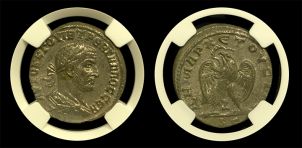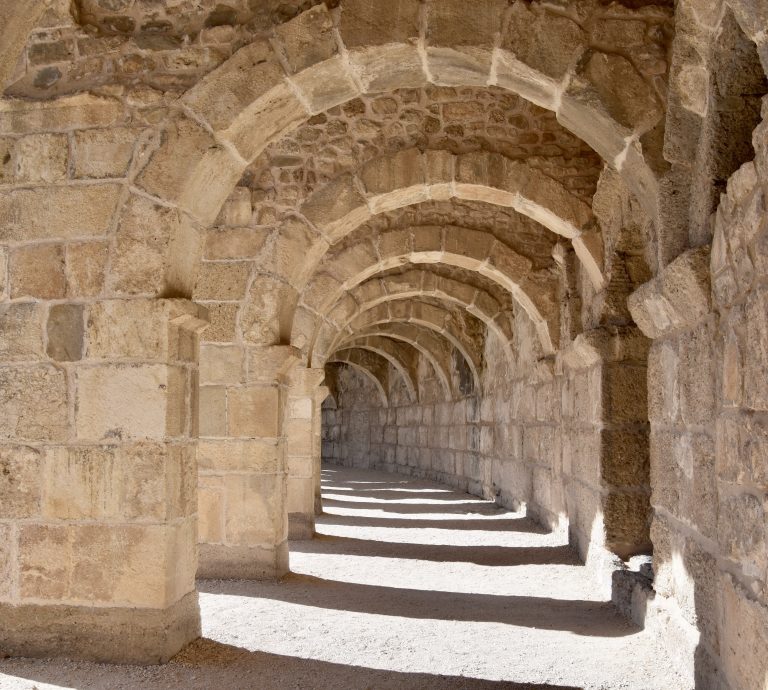Skip to comments.
The Best-Preserved Roman Theater [4:21]
YouTube ^
| June 3, 2025
| Toldinstone Footnotes (Garrett Ryan, Ph.D)
Posted on 06/04/2025 8:09:59 AM PDT by SunkenCiv
The Roman theater at Aspendos, now in southern Turkey, is better-preserved than any other in the classical world. It is still routinely used for performances. The Best-Preserved Roman Theater | 4:21
Toldinstone Footnotes | 41.7K subscribers | 5,896 views | June 3, 2025

(Excerpt) Read more at youtube.com ...
TOPICS: History; Science; Travel
KEYWORDS: amphitheater; amphitheatre; anatolia; aspendos; coins; epigraphyandlanguage; godsgravesglyphs; plebs; romanempire; theater; turkey
Navigation: use the links below to view more comments.
first 1-20, 21-28 next last
1
posted on
06/04/2025 8:09:59 AM PDT
by
SunkenCiv
To: StayAt HomeMother; Ernest_at_the_Beach; 1ofmanyfree; 21twelve; 24Karet; 2ndDivisionVet; 31R1O; ...
Does it seem like it's Roman Empire week? It's also travel season. :^) And, it's *always* Roman Empire week...

2
posted on
06/04/2025 8:11:27 AM PDT
by
SunkenCiv
(Putin should skip ahead to where he kills himself in the bunker.)
To: SunkenCiv
“It’s also travel season.”
Just returned from Rome.
3
posted on
06/04/2025 8:20:19 AM PDT
by
TexasGator
(I'11-.1.'1'11\1I11111111111.1'11.'11/'~~'111./.)
4
posted on
06/04/2025 8:20:58 AM PDT
by
SunkenCiv
(The moron troll Ted Holden believes that humans originated on Ganymede.)
5
posted on
06/04/2025 8:21:41 AM PDT
by
BenLurkin
(The above is not a statement of fact. It is opinion or satire. Or both.)
6
posted on
06/04/2025 8:22:35 AM PDT
by
SunkenCiv
(The moron troll Ted Holden believes that humans originated on Ganymede.)
To: SunkenCiv
That needs to be torn down .
There is no record that a proper building permit was issued .
Things take an upward turn for the boys when Marcus meets some fit Britons in the courtyard and Stylax finds a flyer to a party. With his grocery budget now spent on party tickets, Grumio must scrimp and save in order to put food on the table.
Plebs | The Orgy | Directed by Sam Leifer
S1 | E1 | March 24, 2013 | 22m
https://watch.plex.tv/show/plebs/season/1/episode/1
8
posted on
06/04/2025 8:25:01 AM PDT
by
SunkenCiv
(The moron troll Ted Holden believes that humans originated on Ganymede.)
To: TexasGator
9
posted on
06/04/2025 8:25:16 AM PDT
by
SunkenCiv
(The moron troll Ted Holden believes that humans originated on Ganymede.)
It's a good time to clean up the On Deck folder, again.
Asclepiades of Bithynia, the Greek physician who was the first to believe in the existence of "microbes" by Jorge Álvarez [February 26, 2025]
Cito tuto jucunde, a phrase that can be translated as "Quickly, safely, and pleasantly," was the motto of one of the fathers of medicine -- a Greek who refuted the Hippocratic doctrine of the four humors in favor of a proto-microbial theory based on Democritus' atomic theory. He was a man who recommended not confining the mentally ill but instead treating them with massages, exercise, and diet. He was a pioneer in the use of music therapy, and the Platonic philosopher Antiochus of Ascalon described him as "unsurpassed in the art of medicine and also well-versed in philosophy." We are talking about Asclepiades of Bithynia.
He was born around 120 BCE in Cius, a city founded in the 7th century BCE by Milesian colonists, which in 202 BCE was renamed Prusias Thalassa (Prusias Maritima) because it was located on the Bithynian coast of the Propontis, the present-day Sea of Marmara. In other words, it was in what is now northeastern Turkey -- at the time, a deeply Hellenized region that was already beginning to fall under Rome's influence. It would come under Roman rule in 74 BCE when King Nicomedes IV bequeathed it upon his death, turning it into another province of the Republic. This event triggered the Third Mithridatic War, as Mithridates VI sought to claim it for himself.
10
posted on
06/04/2025 8:30:04 AM PDT
by
SunkenCiv
(The moron troll Ted Holden believes that humans originated on Ganymede.)
This nearly 1,800-year-old Roman Tetradrachm was struck during the reign of Emperor Trebonianus Gallus, who ruled from AD 251-253. Issued from the historic city of Antioch, this coin offers a fascinating insight into Roman provincial coinage during the turbulent mid-3rd century.
Obverse Design: The obverse features a striking portrait of Emperor Trebonianus Gallus, depicted with a laureate head, symbolizing his imperial authority and victories. His likeness captures the stern, determined look that characterized many Roman emperors during this chaotic period in history, when the empire was beset by internal strife and external threats.
Reverse Design: The reverse showcases an impressive eagle, a prominent symbol of the Roman Empire's military strength and imperial power. The eagle stands with wings spread, emphasizing Rome's dominance and the divine favor that its rulers believed they held. The detailed rendering of the eagle on this Tetradrachm is a hallmark of the craftsmanship of Roman provincial mints in Antioch.
Historical Significance: Minted during the Crisis of the Third Century, when the Roman Empire was besieged by invasions, rebellions, and economic hardship, this coin offers a window into a pivotal era. Antioch, a crucial city in the eastern provinces, played a vital role in sustaining the empire’s eastern defenses and facilitating trade across the Mediterranean and Near East. The eagle depicted on the reverse symbolizes Rome's aspirations to maintain its hegemony despite these immense challenges.Gallus | Tetradrachm | About Uncirculated | Austin Coins

11
posted on
06/04/2025 8:33:17 AM PDT
by
SunkenCiv
(Putin should skip ahead to where he kills himself in the bunker.)
To: SunkenCiv
12
posted on
06/04/2025 8:38:48 AM PDT
by
Red Badger
(Homeless veterans camp in the streets while illegals are put up in 5 Star hotels....................)
To: SunkenCiv
The theater at Beit Shean in Israel would give it a run for its money. Also, the Amphitheatre at Caesaria is comparable and has the bonus of a Chariot track next to it (A Roman sports and Entertainment Complex?)
13
posted on
06/04/2025 8:38:59 AM PDT
by
Eli Kopter
(ביחד ננצח הלב שלנו שבוי בעזה Together we will win, our heart is captive in Gaza.)
To: Eli Kopter
14
posted on
06/04/2025 8:47:27 AM PDT
by
SunkenCiv
(Putin should skip ahead to where he kills himself in the bunker.)
To: SunkenCiv
Sunken Civ has done it again. Thanks, S.C.!
To: SunkenCiv
Have they checked for bubble gum under the seats? Maybe they can extract some ancient DNA.
To: TexasGator; SunkenCiv
Just got back from a trip to Europe including Italy.
Saw the ones in Verona and Pompeii. Verona’s is in pretty good shape, but I was surprised how good the one in Pompeii looked considering what it went through.
17
posted on
06/04/2025 9:11:22 AM PDT
by
aquila48
(Do not let them make you "care" ! Guilting you is how they. control you. )
To: aquila48
We took the train to Naples and van to Pompeii.
In 2017 we climbed Mt. Vesuvius. Not this time.
18
posted on
06/04/2025 9:18:20 AM PDT
by
TexasGator
(I'11-.1.'1'11\1I11111111111.1'11.'11/'~~'111./.)
To: Verginius Rufus
“Have they checked for bubble gum under the seats? “
Stupid, ignorant joke.
19
posted on
06/04/2025 9:19:08 AM PDT
by
TexasGator
(I'11-.1.'1'11\1I11111111111.1'11.'11/'~~'111./.)
To: TexasGator
I have relatives near Rome so they took us there in a van and got a private tour. We had been there before but hadn’t seen the arena.
20
posted on
06/04/2025 9:22:03 AM PDT
by
aquila48
(Do not let them make you "care" ! Guilting you is how they. control you. )
Navigation: use the links below to view more comments.
first 1-20, 21-28 next last
Disclaimer:
Opinions posted on Free Republic are those of the individual
posters and do not necessarily represent the opinion of Free Republic or its
management. All materials posted herein are protected by copyright law and the
exemption for fair use of copyrighted works.
FreeRepublic.com is powered by software copyright 2000-2008 John Robinson



